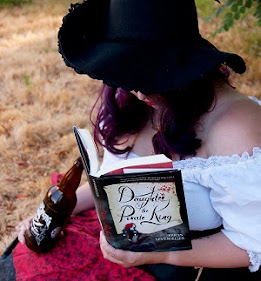One of the biggest challenges of writing any novel set in the distant future is thinking up technology that might exist. Especially hard as anything that I dream up probably already exists in Apple’s labs somewhere.
An example of really nailing it, in my opinion, would be the hoverboards in Back to the Future 2. They truly captured the imagination of the audience. They tied into the plot line of not only the second film, but the first as well. And they’re awesome. Who doesn’t want a hoverboard?
For LOOP and TWIST, I had a few world building rules that I adhered to:
1.) Any technology that’s been around for at least a hundred years in the past will probably be around in some form in the future. Example from LOOP: telephones become speakeazies. We’re never going to lose the need to communicate with each other. Even though our phones now are much more advanced than they were a hundred years ago, the same basic principle is the same—a device that you use to communicate with someone far away.
The same went for how my characters dress. I made a note that Bree still wears shoes with shoelaces. Yes, we have Velcro, and there have been other methods developed to close up your shoes. But none of them have killed off laces because at the end of the day, shoelaces are simple and work just fine.
2.) My readers have excellent imaginations and should be allowed to use them. I left a lot of details hazy as to exactly how some of the technologies in the future works. Take the speakeazy example above. I didn’t go into a huge amount of description with it. I think most people might have an idea of what their ideal phone-like device might be—how it could be carried and turned on/off, where the speaker might be located.
I think this is the main reason why people almost always like the book better than the movie. Imagination is bigger than any IMAX screen.
3.) The characters’ needs drive the technology and not the other way around. Most of my gadgets came from the question, “Well, what’s X going to do now?”
An example of this would be Bree’s magno-grappling gear. She needed to scale the side of the Pentagon. So I’ll be nice and give her a grappling hook controlled by electromagnetic pulses. Well, not too nice. She has a fear of heights. But then once I have her up five stories above the ground, ehh, I’ll make it stop working. Solve one problem. Give her another. In other words, plotting.
4.) Have fun. Hoverboards are totally making a cameo in TWIST. Because I can, that’s why.
Thank you so much for hosting me on your blog today! I hope everyone has as much fun reading TWIST as I had writing it.
Search This Blog
Guest Post: Karen Akins on The Technology in Loop and Twist
Apr 6, 2015
Marcadores:
Features
General
guest post
imagination
JUVENILE FICTION
Karen Akins
Loop
Love amp; Romance
Macmillan
Science Fiction
technology
twist
Young Adult
loading..
Subscribe to:
Post Comments (Atom)









No comments